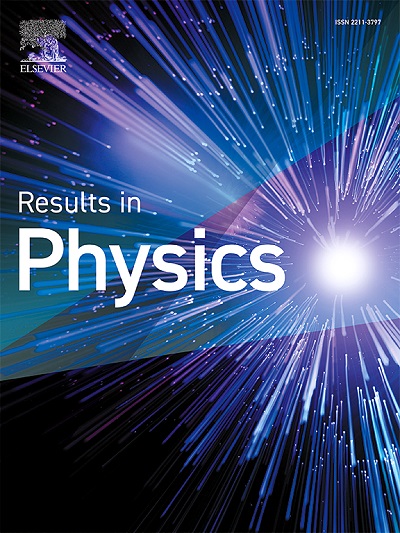Thermal convection of hydromagnetic tangent hyperbolic fluid in spinning porous media cone of non-isothermal power-law model with radiation and heat gain
IF 4.6
2区 物理与天体物理
Q2 MATERIALS SCIENCE, MULTIDISCIPLINARY
引用次数: 0
Abstract
The interest in enhancing industrial output and improving its efficiency has stimulated investigation into various fluid flow characteristics under diverse conditions and geometries. The performance of industrial products depends largely on the quality of the base materials. As such, this study examines the thermal convection of hydromagnetic flow of a tangent hyperbolic fluid within a spinning porous media cone, subjected to a non-isothermal power-law temperature distribution. The viscoelastic property and the nonlinear behavior of the fluid flow embodied the Cauchy stress tensor of the tangent hyperbolic model. The flow is influenced by gravity, porous saturated spinning cone medium, and transverse magnetic field, which stimulates internal heating. Without fluid material deformation, a mathematical differential model is developed to describe the momentum and energy flow dimensions. A comprehensive analysis of the transformed theoretical model is conducted using the Galerkin-weighted residual method in the presence of radiative heat transfer and heat gain. It was revealed from the study that, a rise in the magnetic field intensity inspires Joule heating, increasing the fluid heat distribution and influencing the boundary layer viscosity. Also, radiative heat transfer moderating prompts temperature profile due to convective heat gain. Hence, this study contributes to enhancing the understanding and control of thermal management in industrial applications, such as in cooling technologies for energy systems and rotating machinery.
含辐射和热增益的非等温幂律模型旋转多孔介质锥内磁切双曲流体的热对流
提高工业产量和提高效率的兴趣刺激了对不同条件和几何形状下各种流体流动特性的研究。工业产品的性能在很大程度上取决于基材的质量。因此,本研究考察了旋转多孔介质锥内切线双曲流体的磁流体流动的热对流,受到非等温幂律温度分布的影响。流体流动的粘弹性特性和非线性行为体现为切线双曲模型的柯西应力张量。流动受重力、多孔饱和旋锥介质和横向磁场的影响,激发内部加热。在不考虑流体材料变形的情况下,建立了描述动量和能量流动维度的数学微分模型。利用伽辽金加权残差法对转换后的理论模型进行了综合分析,考虑了辐射传热和热增益。研究表明,磁场强度的增大引起焦耳加热,增大了流体的热分布,影响了边界层粘度。此外,由于对流热增益,辐射传热调节促使温度分布。因此,本研究有助于加强对工业应用中热管理的理解和控制,例如能源系统和旋转机械的冷却技术。
本文章由计算机程序翻译,如有差异,请以英文原文为准。
求助全文
约1分钟内获得全文
求助全文
来源期刊

Results in Physics
MATERIALS SCIENCE, MULTIDISCIPLINARYPHYSIC-PHYSICS, MULTIDISCIPLINARY
CiteScore
8.70
自引率
9.40%
发文量
754
审稿时长
50 days
期刊介绍:
Results in Physics is an open access journal offering authors the opportunity to publish in all fundamental and interdisciplinary areas of physics, materials science, and applied physics. Papers of a theoretical, computational, and experimental nature are all welcome. Results in Physics accepts papers that are scientifically sound, technically correct and provide valuable new knowledge to the physics community. Topics such as three-dimensional flow and magnetohydrodynamics are not within the scope of Results in Physics.
Results in Physics welcomes three types of papers:
1. Full research papers
2. Microarticles: very short papers, no longer than two pages. They may consist of a single, but well-described piece of information, such as:
- Data and/or a plot plus a description
- Description of a new method or instrumentation
- Negative results
- Concept or design study
3. Letters to the Editor: Letters discussing a recent article published in Results in Physics are welcome. These are objective, constructive, or educational critiques of papers published in Results in Physics. Accepted letters will be sent to the author of the original paper for a response. Each letter and response is published together. Letters should be received within 8 weeks of the article''s publication. They should not exceed 750 words of text and 10 references.
 求助内容:
求助内容: 应助结果提醒方式:
应助结果提醒方式:


